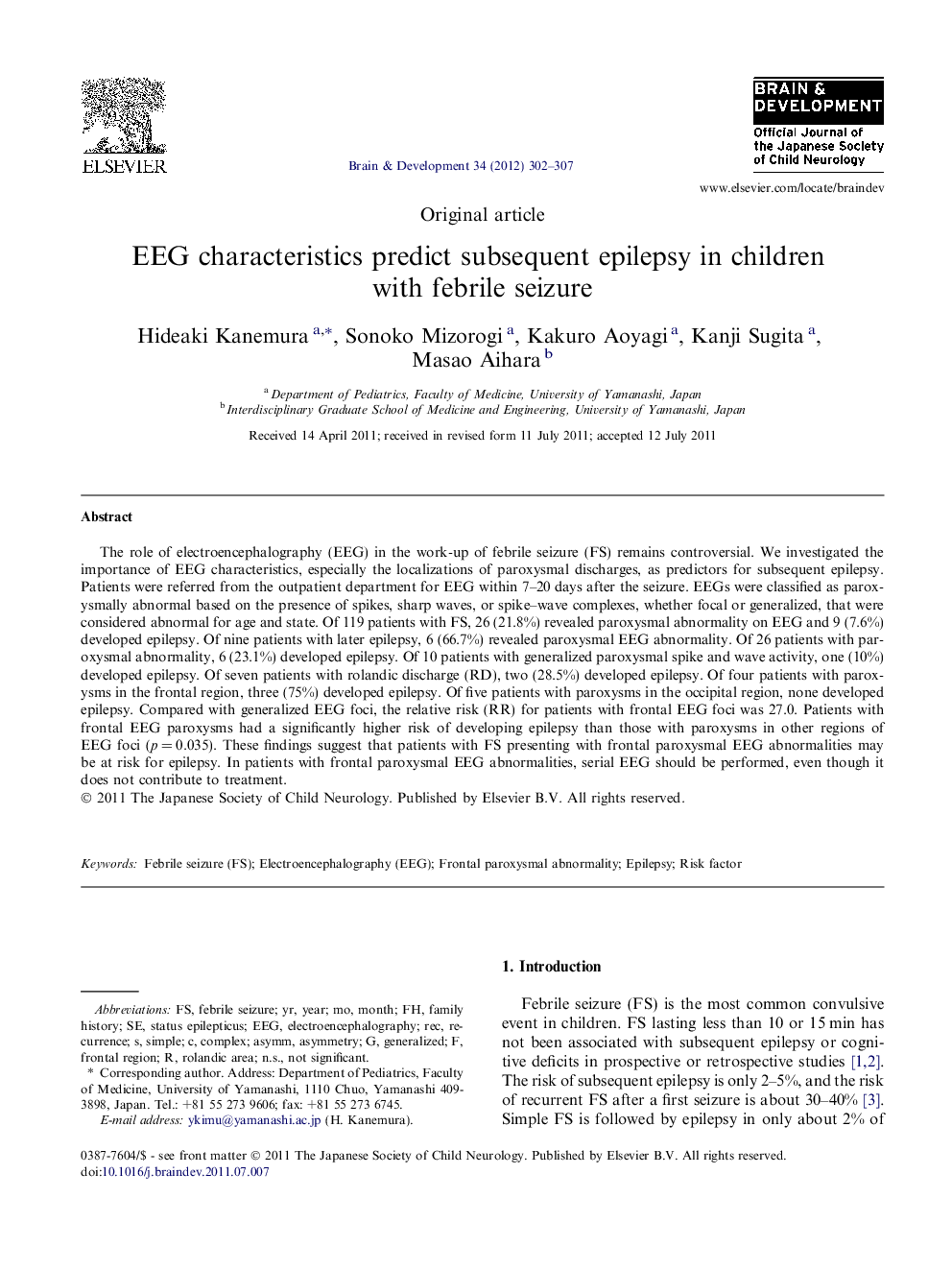| کد مقاله | کد نشریه | سال انتشار | مقاله انگلیسی | نسخه تمام متن |
|---|---|---|---|---|
| 3037233 | 1184406 | 2012 | 6 صفحه PDF | دانلود رایگان |

The role of electroencephalography (EEG) in the work-up of febrile seizure (FS) remains controversial. We investigated the importance of EEG characteristics, especially the localizations of paroxysmal discharges, as predictors for subsequent epilepsy. Patients were referred from the outpatient department for EEG within 7–20 days after the seizure. EEGs were classified as paroxysmally abnormal based on the presence of spikes, sharp waves, or spike–wave complexes, whether focal or generalized, that were considered abnormal for age and state. Of 119 patients with FS, 26 (21.8%) revealed paroxysmal abnormality on EEG and 9 (7.6%) developed epilepsy. Of nine patients with later epilepsy, 6 (66.7%) revealed paroxysmal EEG abnormality. Of 26 patients with paroxysmal abnormality, 6 (23.1%) developed epilepsy. Of 10 patients with generalized paroxysmal spike and wave activity, one (10%) developed epilepsy. Of seven patients with rolandic discharge (RD), two (28.5%) developed epilepsy. Of four patients with paroxysms in the frontal region, three (75%) developed epilepsy. Of five patients with paroxysms in the occipital region, none developed epilepsy. Compared with generalized EEG foci, the relative risk (RR) for patients with frontal EEG foci was 27.0. Patients with frontal EEG paroxysms had a significantly higher risk of developing epilepsy than those with paroxysms in other regions of EEG foci (p = 0.035). These findings suggest that patients with FS presenting with frontal paroxysmal EEG abnormalities may be at risk for epilepsy. In patients with frontal paroxysmal EEG abnormalities, serial EEG should be performed, even though it does not contribute to treatment.
Journal: Brain and Development - Volume 34, Issue 4, April 2012, Pages 302–307